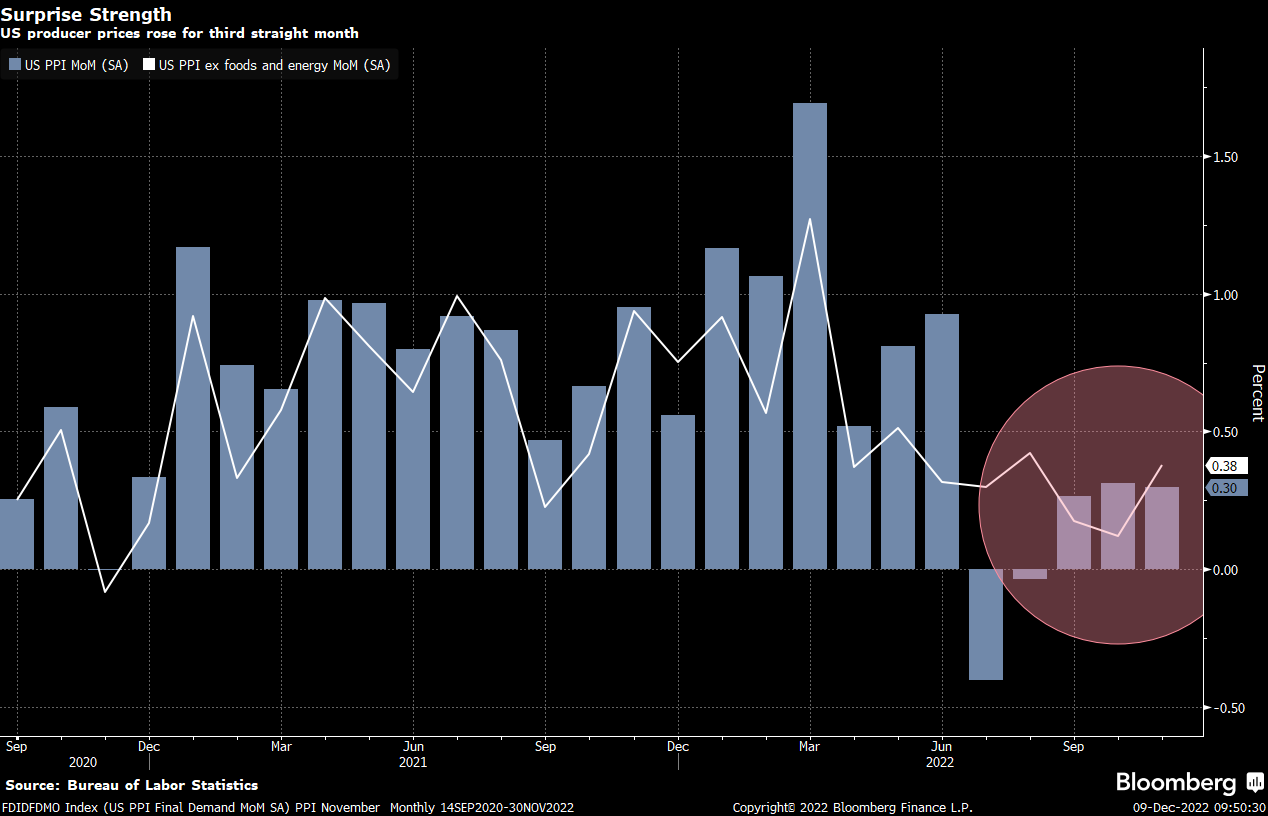Producer prices in the United States rose in November by more than forecast, showing once again just how sticky inflationary pressure is. We now have more support for our argument that the Fed is nowhere near done with rate hikes. We saw the same trend with the ISM numbers released earlier this month. There's now no doubt we see rate hikes into 2023.
The producer price index (PPI) rose 0.3% for the month and is now up 7.4% year over year. On an annual basis, that measure has decelerated, but the figure is still far too high.

That said, general demand has been cooling across the globe, which has helped to improve supply chain issues. Container shipping costs have now dropped back to pre-pandemic levels - that's helped producer price growth slow this year.
Core-goods inflation is also slowing with a small increase of 0.1%, but there's still a significant amount of heat on the massive services side of the economy. Prices there advanced of 0.4%, the largest jump in several months. This combined with the personal consumption expenditure (PCE) numbers last week. This makes it fairly clear that service-sector activity and wage growth are what's driving inflation.
We talked about this wage-price spiral last week and it could become more important than ever if inflation stays persistent.
What our Experts Have to Say
The mid-week short squeeze was bound to come to an end as we continue to see downward momentum in the market. Last week we saw $7 billion in market outflows and that money wasn't finding a home in bonds.
Money Morning Chief Economist Garrett Baldwin sees this as a big miss - and it's not likely to stop anytime soon. November Consumer Price Index (CPI) numbers come next week, too, which could bring even more downward pressure at a time when the S&P 500 is coming up on an important level at 3900.
Watch here for how you can play the too-hot PPI and what's coming next...
Get the latest trading and investing recommendations straight to your inbox.


